Szent Korona - Hiteles másolat | Holy Crown of Hungary - Certified Replica
- Információ / Information

- okt. 9.
- 15 perc olvasás
Frissítve: okt. 13.
HUN: Ineraktiv tájékoztató platform | ENG: Interactive Information Display

HUN: A magyar Szent Korona Európa egyik legrégebben használt és mai napig épségben megmaradt beavató koronája. A magyar államiság egyik jelképe, mely végigkísérte a magyar történelmet legalább a 12. századtól napjainkig. ENG (British English): The Holy Crown of Hungary is one of Europe’s oldest coronation crowns still preserved in its original form. It is a symbol of Hungarian statehood, having accompanied the nation’s history from at least the 12th century to the present day.
HUN:
A gyakori trónviszályok idején birtoklása nagy előnyt biztosított a királyi hatalomért folytatott harcban. A Szent Korona állami jelképi funkciójára épült a Szent Korona-tan, a magyar államjog fejlődésének egyik kiindulópontja. Ez a magyar alkotmányosság alapja volt az Anjou-kor végétől egészen a második világháború végéig. Ezen államelméleti koncepció szerint az ország alaptörvényének és jogrendszerének végső forrása a Szent Korona, és mint jogi személy, a Magyar Államnak felel meg.
ENG (British English): During periods of frequent disputes over the throne, possession of the Holy Crown provided a significant advantage in the struggle for royal power. The doctrine of the Holy Crown was founded upon its symbolic function as a state emblem and became one of the cornerstones of the development of Hungarian constitutional law. It served as the foundation of Hungarian constitutionalism from the end of the Angevin era until the conclusion of the Second World War. According to this theory of statehood, the ultimate source of the nation’s fundamental law and legal system is the Holy Crown itself, which, as a legal entity, corresponds to the Hungarian State.
HUN:
A történelmi hagyomány szerint I. István király a halála előtti napon, 1038. augusztus 14-én a Szent Korona képében felajánlotta Magyarországot Szűz Máriának.
ENG (British English):
According to historical tradition, on the day before his death, 14 August 1038, King Saint Stephen offered Hungary to the Virgin Mary in the form of the Holy Crown.
HUN:
Ezzel elkezdődött az a történelmi folyamat, amelynek során a Magyar Királyság koronázási ékszeréből a magyar államiság jelképe lett.A magyar hagyományban sok évszázadon át Szent István koronájaként tartották számon, külföldön sokfelé ma is így nevezik. A Szent Korona tudományos kutatásának két évszázados története és az elvégzett ötvösszakmai vizsgálatok nyomán a tudományos közösség számára elfogadottá vált, hogy a ma vizsgálható korona két különböző tárgy, azaz a „görög korona” (Corona Graeca) és az úgynevezett „latin korona” (Corona Latina) egyesítéséből jött létre, mely utóbbi nem feltétlenül korona, hanem valami más kegytárgy is lehetett.
Az összeillesztés minősége messze elmarad az egyes részek ötvösszakmai színvonalától. Egyes feltételezések szerint a két részt III. Béla (1172–1196) korában állították össze Magyarországon. A két összetevő pontos származásáról, eredeti rendeltetéséről azonban még nem alakult ki teljes tudományos konszenzus. Az elfogadott elmélet elutasítja azokat az elképzeléseket, amelyek szerint a korona egységes tervezésű, sosem állt két önálló darabból, és a szegecses összeillesztés a lehető legjobb, legcélszerűbb megoldás.
ENG (British English):
This marked the beginning of the historical process through which the coronation jewel of the Kingdom of Hungary became a symbol of Hungarian statehood. For many centuries in Hungarian tradition it was regarded as the Crown of Saint Stephen, and it is still referred to by that name in many foreign countries today. The two-hundred-year history of scholarly research on the Holy Crown, together with metallurgical examinations, has led the academic community to accept that the crown as it exists today was created by the unification of two distinct objects: the so-called “Greek Crown” (Corona Graeca) and the “Latin Crown” (Corona Latina), the latter of which may not originally have been a crown at all, but rather another type of sacred object.
The quality of the joining work falls well below the craftsmanship of the individual parts. According to some theories, the two sections were combined in Hungary during the reign of Béla III (1172–1196). However, there is still no complete scientific consensus regarding the exact origin or original purpose of the two components. The prevailing theory rejects the notion that the crown was of a unified design from the outset, asserting instead that it was indeed made from two separate pieces, and that the riveted assembly represented the most practical and effective solution available.

HUN:
A Szent Korona jelentőségét fémjelzi az az általánosan elfogadott szokásjog, miszerint csak az lehetett Magyarország törvényes uralkodója, akit a bizonyos három feltétel teljesítésével avattak királlyá. Eszerint csak a székesfehérvári Nagyboldogasszony-bazilikában az esztergomi érsek által celebrált misén a Szent Koronával hitelesített koronázás számított érvényesnek.
ENG (British English):
The significance of the Holy Crown is reflected in the long-established customary law which held that only a ruler who fulfilled three specific conditions could be regarded as the lawful sovereign of Hungary. According to this tradition, a coronation was considered valid only if it was conducted with the Holy Crown, by the Archbishop of Esztergom, during the Mass held in the Basilica of the Assumption of the Blessed Virgin Mary in Székesfehérvár.
HUN:
Készítése, kialakulása
A korona létrejöttéről, formájáról korabeli írásos források nem maradtak fenn. A tudományos kutatások számára az egyetlen fogódzót ezért magának a királyi fejéknek a vizsgálata jelenti. A Szent Korona anyagának, szerkezetének, valamint keletkezésének vizsgálata ezért szorosan összefügg egymással. A legkorábbi származástörténeti okirata a 12. század eleji Hartvici episcopi Vita S. Stephani regis mely szerint Szent István II. Szilveszter pápától kapott koronát.
ENG (British English): Creation and Development
No contemporary written sources have survived regarding the origin or form of the Crown. Therefore, for scholarly research, the only available point of reference is the examination of the royal headdress itself. The study of the Holy Crown’s material, structure, and creation is thus closely interconnected.
Its earliest known historical reference appears in the *Hartvici episcopi Vita S. Stephani regis* from the early 12th century, which states that Saint Stephen received a crown from Pope Sylvester II.

HUN:
A korona létrejötte és szerkezete
A Szent Korona tudományos kutatásának két évszázados története és a rendszerváltás után elvégzett ötvösszakmai vizsgálat nyomán a tudomány számára elfogadottá vált, hogy a korona két, markánsan elkülönülő részből, a görög koronából (Corona Graeca) és az úgynevezett latin koronából (Corona Latina) áll. Az összeillesztés minősége és a görög korona díszítése messze elmarad a keresztpánt és az általában a zománcképek minőségétől. Vannak azonban olyan, tudományosan megalapozatlan vélemények is, melyek szerint egységes tervek alapján sőt egyszerre készült, és a szegecses összeillesztés megoldása a legjobb variáció, a felhevítés által okozott roncsolás elkerülésére.
ENG (British English): Origin and Structure of the Crown
Following two centuries of scholarly research on the Holy Crown and the metallurgical examinations carried out after the political transition, it has become generally accepted within the academic community that the Crown consists of two distinctly separate parts: the Greek Crown (*Corona Graeca*) and the so-called Latin Crown (*Corona Latina*). The quality of their joining, as well as the ornamentation of the Greek Crown, falls considerably short of the craftsmanship seen in the cross-bands and most of the enamel images.
However, there are also scientifically unsubstantiated opinions suggesting that the Crown was created according to a unified design, or even made as a single piece, and that the riveted assembly represented the best possible solution to avoid damage that might have been caused by heat during the joining process.
HUN:
A korona egészének rövid leírása
A korona aranyból készült, rekeszzománc képekkel és igazgyöngyökkel, drágakövekkel van díszítve. Felső része sötétebb, tisztább aranyból készült négy, 51 mm széles aranypánt.
Alsó része egy nagyobb ezüsttartalmú, ezért szilárdabb, világosabb aranyból készült abroncs, amelynek rekeszzománc képein görög feliratok vannak.
A korona magassága a tetején ferdén álló latin kereszt nélkül 127 mm. Az alsó koronarész legnagyobb átmérője 216 mm, a legkisebb 204 mm, kerülete 720 mm. Két oldalán négy-négy, hátul egy 10–13 cm hosszú aranylánc (pendilia) lóg le róla, amelyek végén lóhere alakú foglalatban féldrágakövek vannak.
A korona felső részét filigrán díszíti, a pántok szélén igazgyöngy és almandin ékkövek sorakoznak váltakozva, foglalatban. A zománclemezek kétrétegűek és az alsó süllyesztett is amiben a zománc ül, a felirataik latin nyelvűek
A görög koronán nincs filigrán, a gyöngysort drótra felhúzva rögzítették, a zománcképek a lemezek belső mélyedésébe illeszkednek és nem a teljes felületüket borítják. A görög koronán az oromdíszeket és az abroncs peremét gyöngyözött aranydrót kíséri, amelynek megmunkálása más, mint a latin korona pántjait szegélyező gyöngyözött aranydróté.
ENG (British English):
Brief Description of the Entire Crown
The Crown is made of gold and decorated with cloisonné enamel images, pearls, and precious stones. Its upper part consists of four gold bands, each 51 mm wide, made of darker and purer gold. The lower part is a circular band of lighter, more solid gold with a higher silver content, bearing cloisonné enamel images inscribed with Greek lettering.
The height of the Crown, excluding the tilted Latin cross at the top, is 127 mm. The maximum diameter of the lower band is 216 mm, the minimum 204 mm, and its circumference 720 mm. On each side hang four golden chains (*pendilia*), with one longer chain at the back measuring between 10 and 13 cm. Each chain ends in a clover-shaped setting containing semi-precious stones.
The upper part of the Crown is adorned with filigree, while along the edges of the bands alternate rows of pearls and almandine gemstones set in mounts. The enamel plates are double-layered, with the lower recessed surface holding the enamel; their inscriptions are in Latin.
The Greek Crown, by contrast, lacks filigree decoration. Its pearl strings are attached on wires, and the enamel images fit into recesses on the plates rather than covering their entire surface. The crest ornaments and rim of the Greek Crown are bordered by a beaded gold wire, the craftsmanship of which differs from that of the beaded wire edging the bands of the Latin Crown.

HUN:
Corona Graeca
A görög korona abroncsán elöl és kétoldalt fültől-fülig háromszög alakú és félköríves oromzatok váltakoznak. Minden oromzat csúcsán egy-egy színes (vörös, kék, fehér) ékkő vagy gyöngy ül.
Az oromzatok zöldes mintázatai áttetszőek. Az abroncs hátsó részét az oromzatok helyett nagy gyöngyök díszítik.
A korona központi helyén, az abroncson a homlok felett, 47 mm magas és 55 mm széles keretben a trónuson ülő világbíró Krisztus, görög szóval a Pantokrátor teljes alakos képe látható. Krisztus fejét keresztes dicsfény övezi. Jobbját a görög liturgia szerinti mozdulattal áldásra emeli, baljában az „élet könyvét” tartja. A trónus két oldalán egy-egy ciprusfa áll, felettük Krisztus monogramja olvasható görög betűkkel. A Pantokrátor képe a koronán az uralkodói hatalom isteni eredetét emeli ki.
A hátoldal közepén 40 mm magas és 45 mm széles keretben Dukász Mihály portréja látható, a görög felirat szerint "Mihály, a rómaiak (értsd: a bizánciak) Krisztusban hívő császára, a Dukász", a bizánci uralkodó jellegzetes viseletében. Koronás fejét kékeszöld fény veszi körül, jobbjában a labarum, a nyugat-európai jogarnak megfelelő uralkodói jelvény, bal kezében a kard látható. Császári tisztét az is hangsúlyozza, hogy nevének betűi – csakúgy, mint a császári okleveleken az uralkodó aláírása – vörös színűek. Dukász Mihály portréja, ha hátul is, a Pantokrátorhoz hasonlóan az abroncs fölé került, így megelőzte az ott található szenteket is, hangsúlyozva ezzel is a császár hatalmát.
Az abroncson a zománcképek között nyolc négyszögletű közti-mezőn egy-egy nagyobb kő helyezkedik el. Ezek váltakozva: két almandin, három zafír, kettő zöld üveg, egy akvamarin.
Elöl, a Pantokrátor alatt kétoldalt Mihály és Gábriel arkangyalok képei láthatóak, kezükben három ágban végződő hírnöki pálcával. A bizánci egyházi hagyomány szerint ők közvetítik a koronát Krisztustól az uralkodó számára. A két oldalon Szent György és Szent Demeter, a harcos szentek képei következnek lándzsával; majd Szent Damján és Szent Kozma, az orvosszentek következnek.
Az abroncs hátulján, Dukász Mihály alatt, vele háromszöget alkotva Konstantin társcsászár, Dukász Mihály fia és trónörököse (egyes kutatók szerint a korábbi társcsászár, Dukász Mihály szintén Konstantin nevű fivére, vagy VII bíborban született Konstantin), valamint Géza következik. Géza képének felirata a következő: Гєωβιτzас Пιсτос Κρаλңс Τоυрхιас (átírásban: Geóbitzasz pisztosz kralész Turkhiasz), amit így lehet fordítani: „Geobitzasz, Turkia hívő királya”.
A „Geobitzasz” a magyar Géza név bizánci formája, míg „Turkia” megfelel Magyarország hagyományos bizánci elnevezésének. Géza nevét kék betűkkel írták ki. Fejét nem övezi dicsfény, ami az alacsonyabb rangra utalhat.
ENG (British English):
Corona Graeco
On the band of the Greek Crown, at the front and on both sides, alternating triangular and semicircular panels rise from ear to ear. At the top of each panel sits a coloured gemstone or pearl—red, blue, or white. The greenish decorative patterns of the panels are translucent, while the back of the band is adorned with large pearls instead of panels.
At the centre of the Crown, positioned on the band above the forehead, within a frame 47 mm high and 55 mm wide, appears the full-length image of Christ the Ruler of the World—known in Greek as *Pantokrátor*—enthroned. Christ’s head is surrounded by a cross-shaped halo; His right hand is raised in blessing according to the gesture of the Greek liturgy, while His left hand holds the “Book of Life”. On either side of the throne stands a cypress tree, with Christ’s monogram inscribed above them in Greek letters. The image of the Pantokrátor on the Crown symbolises the divine origin of royal authority.
At the back, in the centre, within a frame measuring 40 mm in height and 45 mm in width, appears the portrait of Emperor Michael VII Doukas. According to the Greek inscription, it reads: “Michael, the Christ-loving Emperor of the Romans (i.e. the Byzantines), of the Doukas family.” He is depicted wearing the traditional Byzantine imperial garments, his crowned head surrounded by a bluish-green light. In his right hand he holds the *labarum*—the imperial standard equivalent to the Western sceptre—and in his left, a sword. His imperial rank is further emphasised by the use of red lettering for his name, as was customary for the signatures of Byzantine emperors on official documents. Though positioned at the back, Michael’s portrait, like that of the Pantokrátor, rises above the band, placing him above the saints depicted there and thus highlighting the emperor’s supremacy.
Between the enamel panels on the band are eight rectangular fields, each set with a large stone: two almandines, three sapphires, two green glass stones, and one aquamarine.
At the front, beneath the Pantokrátor, appear the images of the Archangels Michael and Gabriel, each holding a three-pronged herald’s staff. According to Byzantine ecclesiastical tradition, they are the intermediaries who convey the Crown from Christ to the earthly ruler. On either side follow depictions of Saint George and Saint Demetrius, the warrior saints bearing lances, and next to them the twin physician saints, Cosmas and Damian.
On the back of the band, beneath the image of Emperor Michael VII, forming a triangle with him, are depictions of Constantine—his son and co-emperor (though some researchers suggest it represents his brother, also named Constantine, or Constantine VII Porphyrogenitus)—and of Géza. The inscription accompanying Géza’s image reads:
Гєωβιτzас Пιсτос Κралңс Τоυрхιас (transcribed: *Geobitzasz pisztosz kralész Turkhiasz*),
which translates as “Geobitzasz, the faithful king of Turkia.”
“Geobitzasz” is the Byzantine Greek form of the Hungarian name Géza, while “Turkia” was the traditional Byzantine term for Hungary. Géza’s name is written in blue letters, and his head is not surrounded by a halo, possibly indicating a lower rank.
HUN:
Görög feliratú zománcképek a Szent Koronán
ENG (British English):
Enamel Panels with Greek Inscriptions on the Holy Crown
Corona Latina
A korona felső részét négy, drágakövekkel szegélyezett aranypánt alkotja, amelyek az abroncs illetve az afelett lévő oromlemezek mögül indulnak a korona tetején lévő négyszögletes lemez felé. Ezek együtt alkotják az úgynevezett latin koronát, amely egyébként önmagában nem alkot egy teljes fejéket. A négy pánton egyenként két kép van.
A bizánci koronának a Pantokrátort és Dukász Mihályt ábrázoló oromlemezei egy-egy képet szinte teljesen eltakarnak. A latin korona tetején lévő a négyszögletes lemez csakúgy, mint a görög korona homloklemeze, a trónusán ülő Krisztust ábrázolja, két oldalán egy-egy ciprussal.
Feje körül ugyanúgy keresztes fénykoszorú, jobbját áldásra emeli, baljában „az élet könyve”, mint a görög Pantokrátor-képen. Az egész művészettörténeti irodalom csak két olyan Pantokrátor-ábrázolást ismer, amelyen ciprusok vannak, és éppen ez az a kettő, a Szent Koronán.
A latin Pantokrátor-képet lyuk fúrja át, amiben a korona csúcsán lévő kereszt alapja van.
A latin korona képein nyolc apostol szerepel, nevük feltüntetésével. Közülük kettő, Tamás és Bertalan ábrázolása nem, vagy alig látszik, mert a korona alsó, bizánci részének kiemelkedő részei takarják azokat. Ez a tény és a hagyományosan tizenkét apostol hiányos ábrázolása sok kérdést vetett fel a korona kutatása folyamán.
A koronán lévő ékkövek nagyalakú csiszolt és csiszolatlan zafírok, gránátkövek, rubinok és ametisztek. Emellett igazgyöngyök füzérei veszik körül a korona alsó pántját. A színes ékkövek és az áttetsző oromzati díszek révén a korona erős megvilágításban sokféle színben ragyog.
ENG (British English):
Corona Latina
The upper part of the Crown consists of four gold bands, each bordered with precious stones, which rise from behind the arches and panels of the lower band towards the square plate at the top. Together, these elements form what is known as the Latin Crown (*Corona Latina*), which by itself does not constitute a complete headdress. Each of the four bands bears two images.
The panels of the Byzantine Crown depicting the Pantokrátor and Emperor Michael Doukas almost entirely conceal one of these images on each side. The square plate at the top of the Latin Crown, like the frontal plate of the Greek Crown, depicts Christ enthroned, flanked by two cypress trees.
Around His head is the same cross-shaped halo; His right hand is raised in blessing, and in His left He holds the “Book of Life”, just as in the Greek image of the Pantokrátor. In the entire body of art-historical literature, only two known representations of the Pantokrátor feature cypress trees — and both are those found on the Holy Crown of Hungary.
The image of the Latin Pantokrátor is pierced by a hole through which passes the base of the cross that now surmounts the Crown.
The images on the Latin Crown depict eight of the Apostles, each identified by name. Two of them — Thomas and Bartholomew — are either not visible or only barely discernible, as the projecting elements of the lower, Byzantine part of the Crown obscure them. This fact, along with the incomplete representation of the traditional twelve Apostles, has given rise to numerous questions throughout the course of scholarly research on the Crown.
The gemstones adorning the Crown include large, both cut and uncut, sapphires, garnets, rubies, and amethysts. In addition, strings of pearls encircle the lower band of the Crown. Under strong illumination, the Crown gleams in a rich array of colours, reflecting the brilliance of the gems and the translucent decorations of its panels.
HUN:
Zománcképek a Szent Korona latin részén
ENG (British English):
Enamel Images on the Latin Part of the Holy Crown
HUN:
A latin kereszt a korona tetején
A tetején lévő keresztet a 16. században illeszthették a tetejére, meglehetősen durva módon, a Krisztus Pantokrátor-kép átlyukasztásával. Az utólagos fúrást bizonyítja a lyuk körüli fémgyűrű hiánya, a rekeszek roncsolódásai és a közülük kiporló zománc. Ez összefüggésbe hozható lengyel krónikák azon értesülésével, miszerint Jagelló Izabella magyar királyné 1551-ben leszerelt egy keresztet a koronáról fia, János Zsigmond számára, mielőtt azt kénytelen volt átadni I. Ferdinánd magyar királynak. Izabella emellett készíttetett egy hozzávetőleges másolatot az egész koronáról, amit aztán sokáig a lengyel királyok kincsei között őriztek.
ENG (British English):
The Latin Cross on the Top of the Crown
The cross at the top of the Crown was likely affixed during the 16th century in a rather crude manner, by piercing through the enamel image of Christ the Pantokrátor. Evidence for this later alteration includes the absence of a metal ring around the hole, damage to the surrounding cloisonné cells, and traces of enamel dust that had fallen out. This modification is often associated with reports found in Polish chronicles, which state that Queen Isabella Jagiellon of Hungary removed a cross from the Crown in 1551 for her son, John Sigismund, before she was compelled to hand the Crown over to King Ferdinand I of Hungary. Isabella is also said to have commissioned an approximate replica of the entire Crown, which was subsequently kept for a long period among the treasures of the Polish kings.

HUN:
A kereszt elferdülését egy 17. századi sérülés okozhatta: 1638. február 14-én, III. Ferdinánd magyar király felesége Mária Anna királyné koronázása előtt, a pozsonyi várban.
A Bécsből hozott kulcs nem nyitotta a koronázási ékszereket tartalmazó ládát, ezért azt lakatosok törték fel. Ekkor a koronát tartó réztok is megsérült, Esterházy Miklós nádornak késsel kellett azt felnyitnia, és a kereszt ekkor ferdülhetett el.
A Szent Korona valamennyi ábrázolt személye örmény típusú; legklasszikusabb a két angyal ábrázolása. Az Isten égi és földi birodalmának egybeszövése klasszikusan a Magyar Szent Koronában csúcsosodik ki. A Pantokrátor Krisztus ábrázolása ugyanakkor megegyezik kopt barlangtemplomokban talált 4. századi falfestményekkel.
ENG (British English):
The tilting of the cross is believed to have resulted from damage sustained in the 17th century, specifically on 14 February 1638, shortly before the coronation of Queen Maria Anna, wife of King Ferdinand III of Hungary, in Bratislava Castle (then Pressburg). The key brought from Vienna failed to open the chest containing the coronation regalia, and locksmiths were therefore summoned to force it open. During this process, the copper case holding the Crown was also damaged, and Palatine Miklós Esterházy reportedly had to pry it open with a knife — it was likely at this point that the cross became bent.
All the figures depicted on the Holy Crown exhibit Armenian artistic features, most notably the two angels. The fusion of the heavenly and earthly realms of divine authority finds its most complete expression in the Hungarian Holy Crown. The depiction of Christ the Pantokrátor closely resembles fourth-century wall paintings discovered in Coptic cave churches.

(forrás: wikipedia)
A hitelesített másolat története - History of the Certified Replica
HUN:
A Szent Korona hiteles másolatának ezen gyönyörű darabja 2025. augusztus 20-án a Vitézi Rend Egyesült Királyság Törzskapitányságának különleges szervezésének köszönhetően talált otthonra az Egyesült Királyság-beli Warringtonban.
A Magyar Szent Korona hiteles másolatának ezen példánya a legutolsó darab, ami a néhai Sándorfalvi Szécsi István keze munkája. Sándorfalvi Szécsi István munkásságát számos helyen elismerték, többek között a Magyar Királyi Koronaőrség és a Magyarok Világszövetsége is.
ENG:
This beautiful piece, an authentic replica of the Holy Crown of Hungary, found its home in Warrington, United Kingdom, on 20 August 2025, thanks to the special efforts of the United Kingdom Command of the Vitézi Rend.
This particular example of the authentic replica of the Hungarian Holy Crown is the last piece crafted by the late István Szécsi of Sándorfalva. His work was widely recognised, including by the Hungarian Royal Crown Guard and the World Federation of Hungarians.


HUN: Bár pontos adat nem áll rendelkezésre, becslések szerint mindössze 10–15 darab hiteles másolat készült a Szent Koronáról. A legtöbb példány ma magángyűjteményekben található Magyarországon, mindössze négy ismert kivétellel, amelyek New Yorkban, Regensburgban, Erdélyben és Warringtonban kaptak helyet. A Vitézi Rend célja, hogy a korona másolata méltó módon képviselje a magyar örökséget az Egyesült Királyságban.
ENG:
Although no exact data is available, it is estimated that only 10 to 15 authentic replicas of the Holy Crown have ever been made. Most of these are now held in private collections in Hungary, with only four known exceptions located in New York, Regensburg, Transylvania, and Warrington.
The aim of the Vitézi Rend is to ensure that the replica of the Crown serves as a dignified representation of Hungarian heritage in the United Kingdom.
„A Szent Korona nemcsak egy jelkép — a nemzeti összetartozás élő üzenete.”
“The Holy Crown is not merely a symbol — it is a living message of national unity.”
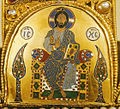
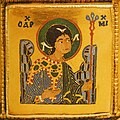
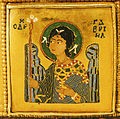
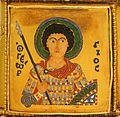
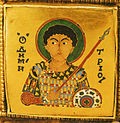
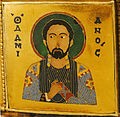
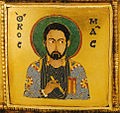
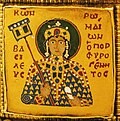
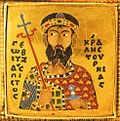
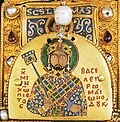
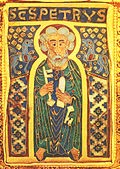
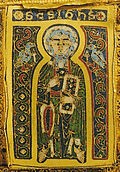
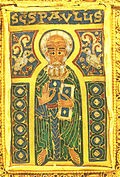
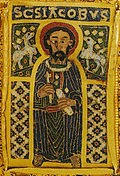
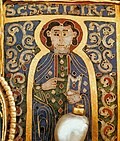
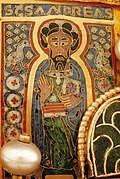
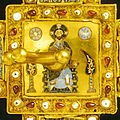



Hozzászólások